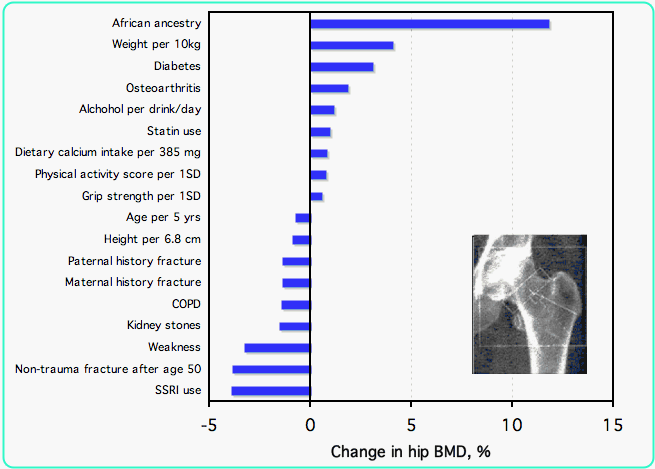| Factor | Relative risk |
|---|
| Anticonvulsants |
2.0 |
|---|
| History maternal hip fracture |
1.8 |
|---|
| History hyperthyroid |
1.7 |
|---|
| On feet less than 4 hr/day |
1.7 |
|---|
| Inability to rise from chair |
1.7 |
|---|
| Resting pulse above 80 |
1.7 |
|---|
| Benzodiazepines |
1.6 |
|---|
| Poor general health |
1.6 |
|---|
| Age (5 yrs) |
1.4 |
|---|
| Depth perception |
1.4 |
|---|
| Height |
1.3 |
|---|
| Caffeine intake |
1.2 |
|---|
| Relative benefit |
| Weight gain |
1.25 |
|---|
| Walking for exercise |
1.42 |
|---|
|
This table shows a list of the most important epidemiological risk factors for hip fracture that are independently significant even when adjusted for bone density or history of previous fracture.
(Cummings)
Some important causes of secondary osteoporosis are not on this list because they are too uncommon (for example, myeloma) or because the clinical risk factors were associated with one of the factors on the list (for example, many diseases resulted in inability to get up from a chair).
A woman has a particularly high risk of hip fracture (2.7) if her mother broke her hip before age 80.
|




 Move your mouse over the graph to see results for spine.
Move your mouse over the graph to see results for spine.


